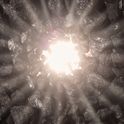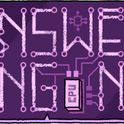
“Comets are like cats: they have tails and do what they want.” This piece of astronomical folklore was confirmed once again as the “comet of the century”—Comet Ison—or formally “C/2012 S/1” hurtled towards the sun in the past few months with the promise of being “brighter than the full moon.” The hype, however, omitted some important facts. First, on 28th November, when the comet was expected to be as its brightest and most visible, the sun was in direct line of sight between the comet and the Earth, rendering Ison invisible. Second, as a comet is an icy dirtball, or a dirty iceball, it had almost literally a snowball’s chance in hell of surviving its close encounter with the sun. Third, the very rarity of a bright comet, which has come towards Earth from the “Oort cloud” deep in space, made it very difficult to predict what would happen. On 29th November, astronomers waited as the remnant emerged from behind the sun, to see what, if anything, had survived. Initial fears were that the heat had destroyed the comet. But then images from the Soho satellite showed that something had emerged from the opposite side of the sun, and was following Ison’s orbit. Reports of its death may have been greatly exaggerated. Although there was no real hope of Ison being a brilliant sight visible to the naked eye, an enthusiast with a telescope could see it both in the early morning and evening skies during its progress through the constellations. Although this was not the visible sensation once anticipated, for professionals it is a rare opportunity to learn about the origins of the solar system, and perhaps even life itself. We still know relatively little about comets, so when a new one appears there is a chance to study these fossil relics from the birth of the solar system. Some astronomers have suggested that comets, which showered down on the newborn Earth, seeded life. If so, then comets such as Ison should contain elements essential for life’s building blocks: carbon, nitrogen and oxygen, in complex combinations, that could seed amino acids. Astro-biologists have been measuring the spectral emissions of Ison to see what it is really made of. Out in space, the Hubble Space Telescope produced wonderful images of dust and ice streaming from the comet’s nucleus as it hurtled towards the sun. And some 23 miles above us, an array of instruments on a balloon have been measuring the spectrum of light emitted by the molecules in the comet. Spectra are like atomic barcodes, revealing the elements and molecules in remote objects. Each element emits a different wavelength of light. By analysing light from a comet, scientists can learn what it is made of. The measurements of spectra cover visible light, and extend into the infra-red and ultra-violet regions of the spectrum. Already evidence of carbon dioxide and water has been found in Ison. So could life have been brought to Earth on a comet? While some of the ideas associated with this idea are fanciful, the possibility has been taken more seriously since 1986 and the discovery in Comet Halley of ammonia and other molecules that are the precursors of amino acids, the basic components of proteins. If enough of Comet Ison survived its close encounter with the sun, it may yet give an opportunity to measure the amounts of organic molecules in a comet. Optical telescopes such as the Hubble are invaluable. They can reveal the extent and orientation of the jets. Images may show whether the comet is rotating, which can give indications as to its origin and history. No single experiment reveals everything. Instead, a combination of techniques will tease out clues about these mysterious objects, which are the oldest in the solar system. The very unpredictability and mystery of comets caused the ancients to regard their appearances with awe. Comets were believed to herald great events. Shakespeare, in Julius Caesar, wrote: “When beggars die there are no comets seen. The heavens themselves blaze forth the death of princes.” Today we know better. Comets are members of the solar system. Like the planets, they were formed around 4.6bn years ago and they orbit the sun. However, whereas the planets are near enough to the sun to reflect sunlight and be visible in dark skies, comets spend most of their time in the deep freeze of the solar system, far beyond the orbits of Neptune and Pluto. At the birth of the solar system these snowballs formed near the giant planets. Some, ensnared by gravity, rained down on the newborn planets. Others arc on trajectories that swing them around periodically—in the case of Halley, once every 76 years. Some were flung far out, to where they now lurk in the Oort cloud. This continent of comets orbits the sun at a distance 10,000 times further away than the Earth—in other words about a light-year away: vastly further out than Pluto or Neptune. Since their formation, they have stayed out of sight, unaffected by planetary evolution. Ison is so interesting because it comes from the Oort cloud, where its material has been uncorrupted for billions of years; comets from the cloud retain a memory of the old solar system. This is their interest. By measuring their make-up, we learn about the primeval soup, and can perhaps resolve the mystery of how life began. Occasionally, a perturbation from another star, as the solar system itself moves through the galaxy, can disturb a comet. This might tip it out of our solar system or, as in the case of Ison, send it on an arcing path towards the sun. When such a comet passes the orbit of Jupiter, the sun’s warmth is felt. The ice sublimates—turns to gas—as solar radiation pushes cometary material out, forming the tail. Comet Ison was still beyond Jupiter when it was first seen, in February 2012. Its orbit was tracked, revealing it to be a “sun grazer,” that would come within 1.1m kilometres of the sun on 28th November 2013. At that first sighting, it was so bright that it was hoped there would be a dramatic spectacle as it approached the sun. The sun’s warmth dies away in proportion to the square of the distance from it. Near the sun, where the warmth is intense, the comet sublimated rapidly. This is why it was expected to be so bright around the year end. However “comets do what they want” is the scientists’ way of saying that they are inherently unpredictable. That is the catch. A comet coming from the Oort cloud for the first time will not have been disturbed by warmth for over four billion years. Its outer crust can be volatile. It is possible that this crust was released by the first faint glow of sunlight when still very far from Earth. Thus the bright sighting in 2012 might have been misleading: the comet might be pea-sized, and have released its outer crust in a sudden “poof,” which made it appear intrinsically bright. Astronomers watched, and during the next months it did not brighten. Then observations from the Swift satellite showed that Ison had a diameter of about 3 miles: reasonable but not huge. On 10th April, Hubble reported that Ison had developed a tail. For the following two months the line of sight of Ison was too near the sun for any observations. Then on 12th August it reappeared. Unfortunately it was significantly fainter than expected. As it approached the sun, sublimation of water began. By September its tail was growing. A green glow was seen, due to radiation from CN and molecular carbon. That is already an interesting observation—CN is the molecular seed of cyanides. Hydrogen cyanide, as lovers of Agatha Christie will be aware, is a poison when in the presence of water. However, in other circumstances it can be a precursor of life. Hydrogen cyanide can contribute to the formation of amino acids, upon which all life on Earth depends. On 6th November Ison passed nearest to Earth and on 28th November it arced behind the sun, and has since reappeared. What can be learned from the fragment that survived? Unless Ison has been destroyed, it will grow two tails. The first is formed by ions, created as molecules are ripped apart by the solar wind (a stream of charged particles emitted by the sun) giving a blue glow. Ions carry an electric charge, meaning that they are affected by the magnetic field lines of the solar wind. The ions travel along these lines and indirectly show how that wind is blowing. The second tail is formed by dust particles, which move more slowly than the ions. Lost to the comet, and electrically neutral, the dust doesn’t feel the sun’s magnetic field. As a result it is held by the sun’s gravity, and orbits it like the planets. This causes the characteristic arcing shape of the dust tail. The rarity of a comet from the Oort cloud made it difficult to predict what would happen. Ison has taught astronomers a lot and when the next one arrives, we will be better able to predict the outcome. This time, contrary to forecasts, Ison will not be “brighter than the full moon”; it might not even be visible to the naked eye, but if conditions are good, binoculars or a telescope may enable us to glimpse it. Images from professionals have revealed the beauty of a comet streaking through the heavens. These may inspire a generation of would-be scientists. For professionals, it will offer a rare chance to find what comets are made of. Whereas Shakespeare wrote that comets heralded the death of princes, just possibly they were the seeds of life.












